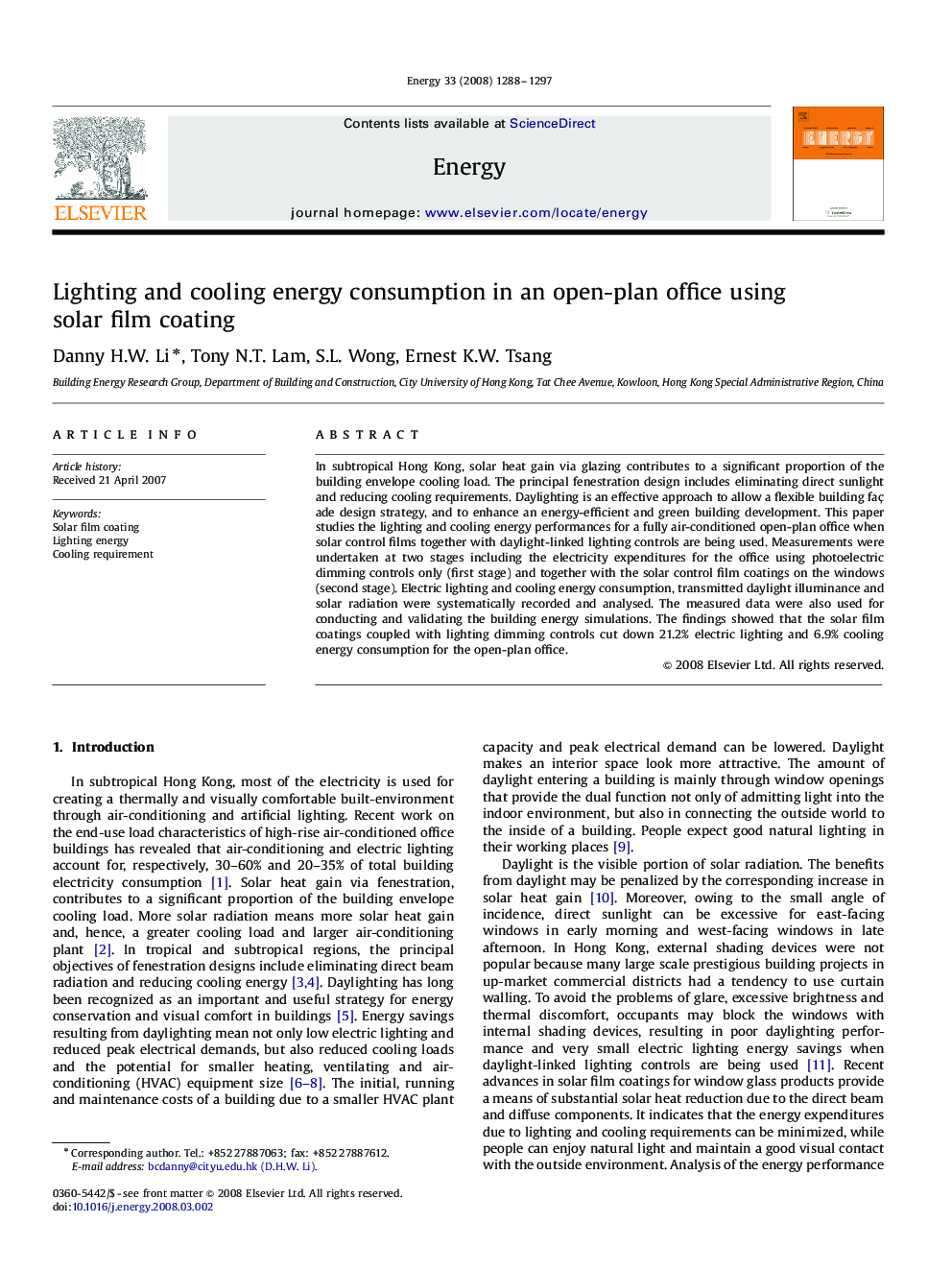| Article ID | Journal | Published Year | Pages | File Type |
|---|---|---|---|---|
| 1735735 | Energy | 2008 | 10 Pages |
In subtropical Hong Kong, solar heat gain via glazing contributes to a significant proportion of the building envelope cooling load. The principal fenestration design includes eliminating direct sunlight and reducing cooling requirements. Daylighting is an effective approach to allow a flexible building façade design strategy, and to enhance an energy-efficient and green building development. This paper studies the lighting and cooling energy performances for a fully air-conditioned open-plan office when solar control films together with daylight-linked lighting controls are being used. Measurements were undertaken at two stages including the electricity expenditures for the office using photoelectric dimming controls only (first stage) and together with the solar control film coatings on the windows (second stage). Electric lighting and cooling energy consumption, transmitted daylight illuminance and solar radiation were systematically recorded and analysed. The measured data were also used for conducting and validating the building energy simulations. The findings showed that the solar film coatings coupled with lighting dimming controls cut down 21.2% electric lighting and 6.9% cooling energy consumption for the open-plan office.
